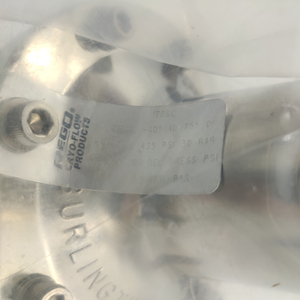
All categories
Featured selections
Trade Assurance
Buyer Central
Help Center
Get the app
Become a supplier

(1821 products available)














































Oxygen-reducing valves come in different varieties, and each serves an important purpose in controlling the pressure of oxygen, especially in settings where the sensitivity to high concentrations of oxygen is critical.
This type of valve reduces oxygen pressure in one step to the desired output level. This is often applied in situations of low flow or where the required pressure is minimal, like in gas welding or cutting. The design is uncomplicated and easier for operation and maintenance.
This type of valve gradually reduces pressure through multiple stages. The gas first passes through a high-pressure regulation section and is then lowered to a more usable pressure. This method is used where the initial pressure is extremely high and needs to be reduced to a low, usable range, such as in chemical processing or deep-sea diving. The pressure drop is in stages, effectively reducing the risk of oxygen concentration in the downstream system.
With modern technology, there are automatic oxygen-reducing valves that adjust pressure settings without human intervention. They utilize sensors and actuators to maintain the desired pressure consistently. This is useful in environments requiring precise oxygen levels, like in aerospace or medical applications. Since these valves are self-regulating, they may provide less manual control and potentially malfunction without warning.
They are used to prevent back pressure in a system. They are not primarily pressure reducers but maintain a stable output pressure to avoid any backflow or damage to sensitive equipment. These valves are common in experimental settings and gas analysis systems. Back-pressure valves are sometimes combined with other types that provide both pressure reduction and stable output.
These are combined oxygen-reducing valves with integrated pressure measuring devices. This is helpful in conditions where monitoring not only is important but also pressure consistency. The combined gauge ORVs are often applied in fields such as petrochemical and steel manufacturing because they can withstand the environment and simultaneously read and adjust the pressure to a safe level.
Oxygen-reducing valves must be made of strong material to ensure safety during an interaction between high-pressure oxygen and combustible materials. This section discusses the durability of these materials as well as their function.
Stainless steel offers durability, corrosion resistance, and strength. Often, it is the material of choice for valves used in marine and medical applications, where durability is essential. Stainless steel has a long life span and is unaffected by the oxygen concentration. It also performs well in high-humidity conditions and is thus used in ship equipment and underwater breathing systems.
Bronze and brass are common copper alloys. They are also widely used in oxygen-reducing valves due to their excellent machinability and resistance to dezincification corrosion. They make strong, tough valves for heavy-duty industrial applications. They perform well in environments with chemical exposure or extreme temperatures as they can withstand heat while also withstanding high pressures.
Engineering plastics such as PEEK and PTFE are used to manufacture internal valve components. They offer excellent resistance to chemical degradation, making them valuable in corrosive environments. Plastics don't conduct electricity and thus decrease the chance of sparks forming in electronic or sensitive laboratory equipment. While durable, plastics are often reinforced with metal components to sustain mechanical loads better.
A lightweight alternative to steel and copper alloys. Because of its light weight, it is mostly used in mobile oxygen-reducing systems that are portable like military applications or diving equipment. While less durable than stainless steel, modern aluminium alloys have sufficient tensile strength and may be treated to resist wear.
Titanium is increasingly used in high-end applications due to its exceptional strength-to-weight ratio and resistance to both corrosion and wear. It is ideal for aerospace and deep-sea environments, where durability is critical. Titanium does not react with oxygen, making it a safe choice for valves handling pure oxygen under pressure. It is, however, more expensive than other materials, so it is often reserved for mission-critical applications.
Oxygen-reducing valves are important in various industries, ensuring safety and efficiency in operations involving high-pressure oxygen. Below are the industries and commercial value.
They control oxygen concentrations during patient therapy. They ensure patients receive the correct oxygen flow without the risk of fire or explosion. Since hospitals always need to deliver oxygen to patients, they need ORVs to prevent oxygen overpressure, which may cause pipeline delivery of the gas to patients in critical care, surgery, or respiratory therapy. The demand for these valves will keep increasing as the world's population ages and healthcare technology advances.
Oxygen-reducing valves control the flow of oxygen to rockets and space vehicles. They are integrated into life support systems to provide astronauts a safe breathing mixture. The ORVs maintain pressure in any dynamic atmospheric change. Therefore, they are responsible for keeping the oxygen at a safe level throughout the flight. The valves are designed to be compact and lightweight to save space and energy. Advances in aerospace technology will likely increase demand for more efficient, reliable ORVs.
The ORVs control oxygen's dangerous reactive potential in chemical processes, preventing explosions. They are used to reduce oxygen pressure in several operations, such as gas mixing and metal cutting/welding. The valves are constructed using durable materials to withstand harsh chemicals and extreme temperatures. Any delay in production will cause a shortage; thus, these valves must be serviced regularly. The demand in this industry ensures a steady need for maintenance and replacement.
They are implemented in underwater breathing systems and submersibles, where they safely control oxygen levels while preventing excess pressure. The ORVs are critical for deep-se sea divers and engineers working at extreme depths to maintain a safe breathable gas mixture. These valves must be corrosion-resistant to ensure they do not fail. With an increase in underwater exploration, technology, and marine tourism, the demand for these valves will also increase.
ORVs are used in steel and metal manufacturing for oxygen cutting, welding, and other chemical treatments. The valves help regulate oxygen's concentration to dangerous reactions and thus control oxidation, which may weaken the metal. If this metal is worn out, it may cause production delays, leading to huge financial losses and a shortage of essential metal products. This industry relies on constant operation, and any downtime can have serious consequences, so the need for these valves and their durability is key.
Selecting the right oxygen-reducing valve will ensure operational safety, efficiency, and cost-effectiveness in various applications. Here are some key factors to consider when purchasing.
This is one of the most important factors as ORVs must handle the expected pressure of the system. Ensure the valve's input and output pressure range match the system's operational requirements. If the pressure range is too high or too low, it may cause valve failure or compromise safety. Correct pressure ensures a safe functioning of the product without extra costs of repairs.
Since oxygen is very reactive, it will react with certain metals and cause an explosion. Thus, materials for an oxygen-reducing valve must be non-combustible and oxidization-resistant. Stainless steel, copper alloys, and titanium are usually the best for this job. Ensure the materials used in the valve are suited for the environment it will be used in, such as high humidity, chemicals, or extreme temperatures.
If the operating conditions require precise pressure control, then go for a valve that has accuracy and a minimal fluctuation rate. It is especially critical in the medical and aerospace industries, where even slight pressure variations may have serious consequences. Precision valves reduce the risk of overpressure or undersupply, compromising safety and efficacy and less wastage of gas, thus saving money.
Go for a valve that is easy to maintain to ensure longevity and reliability. Consider factors like material durability, the need for regular servicing, and the ease of disassembly for repairs. While some low-maintenance options may have a higher upfront cost, they will save money over time by preventing failures. In conditions where ORVs work continually, go for ones that have a long service life and are easily accessible for repairs.
Always ensure that the ORVs meet international safety and quality standards set by the industry authorities. Such certifications will ensure that the valve's performance, safety features, and material integrity are valid and will not compromise on safety. Using certified equipment ensures compliance with regulatory requirements to reduce liability and ensures reliable performance and more robust quality for critical applications.
The medical, aerospace, petrochemical, marine, and metallurgical industries rely on these valves since they are critical for patient therapy, spacecraft, chemical processing, deep-sea diving, and metal manufacturing.
Refer to the following factors: the operating pressure range, material compatibility, precision, maintenance requirements, and industry standards. These factors affect the safety, efficiency, and durability of ORVs.
Using high-quality, corrosion-resistant materials such as stainless steel, copper alloys, and titanium will ensure durability in harsh chemical or underwater environments.
These standards ensure safety and performance and comply with regulatory requirements while reducing liability for manufacturers and users. Certified valves ensure reliable performance in critical applications.